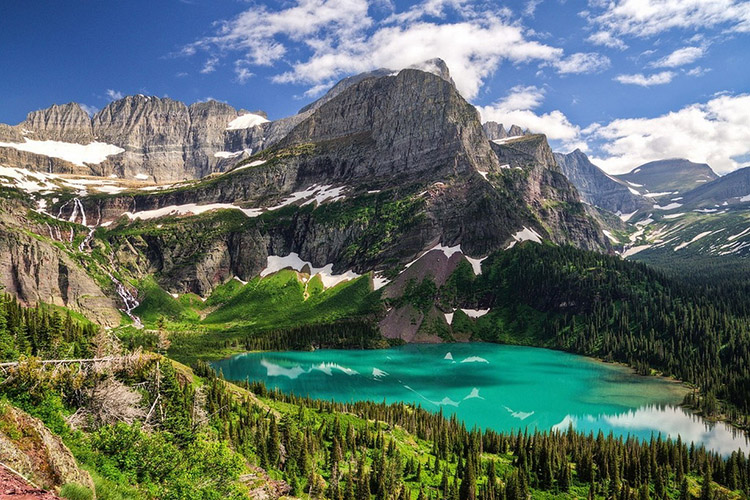Cannabis has been illegal for recreational use in Montana since 1929. In 2011 however, House Bill 161 tried to repeal I-148 and it was passed by both houses of the state’s legislature. However, Governor Brian Schweitzer intervened by vetoing the bill and saving Montana’s MMJ program. The reason for the attempt to eliminate the program was due to the huge rise in MMJ cardholders in the state.
In 2009, there were just 2,000, but that number swelled to 31,000 within two years. After the veto, the Legislature placed major restrictions on the program, and while District Judge James Reynolds blocked many of them, there were enough to reduce the number of MMJ cardholders to 9,000 by 2014.
It is now less easy to get your medical marijuana card in Montana, but we will show you how to navigate the process in this guide.
The Definitive Guide on How to Get a Medical Marijuana Card in Montana
Before we begin, make sure you satisfy the following criteria:
- You are a resident in the state of Montana.
- You are at least 18 years of age. If you are a minor, you will need to complete a separate form.
- You must be diagnosed with a debilitating qualifying medical conditionOR have chronic pain.
- You need to receive written certification from a licensed physician.
Step 1 – Schedule an Appointment with a Physician
The first thing you need is a recommendation signed by a doctor. While you can get the forms signed by any physician, most patients visit a clinic that specializes in cannabis certification. It is up to you to research the requisite clinics to find out the hours they devote to certification.
For example, The Cannabis Clinic Montana schedules its marijuana clinics every Tuesday, and most Thursdays from 11 am to 4 pm at its office in Bozeman. It also has events scheduled in its other Montana locations during the week. Click on the link above for more information.
When you contact a clinic, it will let you know the medical records you must provide when you attend. If you need your records transferred, we recommend doing so a couple of weeks in advance.
Step 2 – Discuss Your Medical Condition with The Physician
In Montana, there are three separate Physician’s Statement options:
- Debilitation Condition if you need marijuana due to a debilitating medical condition (more on this below).
- A Physician’s Statement if you have chronic pain. With this application, you also need proof supporting the diagnosis of chronic pain which may include MRI scans or X-rays. If the cause of the chronic pain is not captured with these tests, you need a second physician’s statement confirming the diagnosis of chronic pain.
- A Statement to allow minors to use medical marijuana. Once again, you need two Physician’s Statements to apply.
Once the physician has completed the assessment, he will decide if you are eligible for an MMJ card. If you are, you will receive a ‘packet’ which contains the doctor’s recommendation and other paperwork that your provider needs to complete.
Step 3 – Decide If You Want to Receive Marijuana from a Licensed Provider, Or Grow Your Own ****H3 Tag****
Before you complete the application form, Montana residents must decide if they wish to get their weed from a provider or whether they wish to grow their own. If you want to cultivate cannabis, you have to indicate as such on the cardholder application form. This involves including the physical address where the marijuana will be grown.
If you are leasing or renting a property, you need the written permission of the landlord which is a separate form. If you are a registered cardholder who has not named a provider, you can grow up to four mature plants and four seedlings.
Your second option is to receive your marijuana from a provider. This is a different section on the cardholder form. You don’t receive any advice from the Program when it comes to choosing a provider, so it is your responsibility to research reputable and legal dispensaries in your area. If you choose this option, you are allowed possession of up to one ounce of usable marijuana.
Please note that you must choose one or the other; you can’t name a provider and elect to grow your own.
Step 4 – Complete the Montana Medical Marijuana Program Application Form & Send It
You can access the application form from the Montana Department of Public Health & Human Services (DPHHS). Make sure you include the requisite documentation as requested on the form. You must also include a photocopy of a Montana state-issued ID or driver’s license. Pay the fee, send the application to the DPHHS office in Helena, and wait!
The official state website does not provide an application timeline. It says that all applications are processed in order of date received. Your waiting time depends entirely on the number of applications received at that time. This is frustrating because you are not legally allowed to use weed in Montana until you have the card in your possession. If you want to speed up the process, pay by credit card or ACH.
Officially, the state is required to process your paperwork within 30 days. Your payment is processed immediately so don’t get overly excited when the money clears! Once you are approved, the DPHHS will send out two copies. You receive one, while the other is sent to your provider.
You can legally make your purchase, or grow your weed, as soon as your card arrives in the mail. Make sure you keep your MMJ card on your person at all times, especially when in possession of marijuana! Even if your provider gets to know you, you will not receive your weed unless you show your card each time.
What are the Qualifying Conditions Required to get a Medical Marijuana Card in Montana?
If you are looking to receive an MMJ card for a debilitating condition, please note the following qualifying conditions:
- HIV/AIDS
- Cachexia or Wasting Syndrome
- Glaucoma
- Cancer
- Vomiting or Intractable Nausea
- Epilepsy or an Intractable Seizure Disorder
- Crohn’s Disease
- PTSD
- Admittance into hospice care
- Multiple Sclerosis
- Chronic Inflammatory Demyelinating Polyneuropathy
- A CNS disorder that results in muscle spasms or painful/chronic spasticity
If you are applying to get relief from chronic pain, you have to prove that it is persistent and so severe that it interferes with your daily activities.






